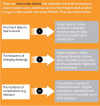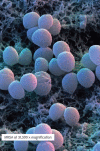Wound management for the 21st century: combining effectiveness and efficiency
- PMID: 27460943
- PMCID: PMC7949725
- DOI: 10.1111/iwj.12623
Wound management for the 21st century: combining effectiveness and efficiency
Abstract
Treatment of wounds of different aetiologies constitutes a major part of the total health care budget. It is estimated that 1·5-2 million people in Europe suffer from acute or chronic wounds. These wounds are managed both in hospitals and in community care. The patients suffering from these wounds report physical, mental and social consequences of their wounds and the care of them. It is often believed that the use of wound dressings per se is the major cost driver in wound management, whereas in fact, nursing time and hospital costs are together responsible for around 80-85% of the total cost. Healing time, frequency of dressing change and complications are three important cost drivers. However, with the use of modern, advanced technology for more rapid wound healing, all these cost drivers can be substantially reduced. A basic understanding of the terminology and principles of Health Economics in relation to wound management might therefore be of interest.
Keywords: Efficiency; Health economics; Resources; Service improvement; Wound healing.
© 2016 Medicalhelplines.com Inc and John Wiley & Sons Ltd.
Figures






References
-
- Harding K. Understanding healing after skin breakdown. In: Skin breakdown – the silent epidemic. Hull: Smith & Nephew Foundation, 2007:13–16.
-
- Smith & Nephew Foundation; (2007). Skin breakdown – the silent epidemic. Smith & Nephew Foundation, Hull.
-
- Wounds International (2012). International consensus. Optimising wellbeing in people living with a wound. Wounds International, London.
-
- Posnett J, Gottrup F, Lundgren H, Saal G. The resource impact of wounds on health‐care providers in Europe. J Wound Care 2009;18:154–61. - PubMed
-
- Troxler M, Vowden K, Vowden P. Integrating adjunctive therapy into practice: the importance of recognising ‘hard‐to‐heal’ wounds. World Wide Wounds 2006. URL http://www.worldwidewounds.com/2006/december/Troxler/Integrating-Adjunct... [accessed on November 2015].
Publication types
MeSH terms
LinkOut - more resources
Full Text Sources
Other Literature Sources
Medical

